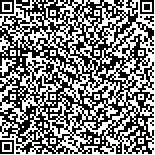高歌,郭华平,何曼,等.3D打印踝足矫形器与传统踝足矫形器对脑卒中患者步行功能恢复的疗效观察[J].中华物理医学与康复杂志,2024,46(6):524-528
扫码阅读全文

|
| 3D打印踝足矫形器与传统踝足矫形器对脑卒中患者步行功能恢复的疗效观察 |
|
| |
| DOI:10.3760/cma.j.issn.0254-1424.2024.06.007 |
| 中文关键词: 脑卒中 3D打印踝足矫形器 步行功能 平衡能力 |
| 英文关键词: Stroke 3D printing Ankle and foot orthosis Walking Balance |
| 基金项目: |
|
| 摘要点击次数: 2717 |
| 全文下载次数: 3507 |
| 中文摘要: |
| 目的 探讨3D打印踝足矫形器与传统踝足矫形器对脑卒中患者步行功能恢复的影响。 方法 采用随机数字表法将34例脑卒中后偏瘫患者分为观察组及对照组,每组17例。2组患者均给予良肢位摆放、关节活动度训练、站立及步行功能训练等。在进行站立及步行训练过程中,观察组、对照组患者均分别全程穿戴3D打印踝足矫形器或传统踝足矫形器,2组患者均连续治疗4周。于治疗前、治疗4周后分别采用10米步行测试(10MWT)、6分钟步行测试(6MWT)、起立-行走计时测试(TUGT)对2组患者的步行速度、步行耐力及动态平衡能力进行评估;同时检测2组患者步行时双侧下肢股直肌、胫骨前肌及腓肠肌积分肌电值(iEMG),并比较上述肌肉健/患侧iEMG比值,以评估患侧下肢肌肉激活情况。 结果 治疗后2组患者10MWT、6MWT及TUGT均较治疗前明显改善(P<0.05),并且观察组10MWT、6MWT及TUGT[分别是(22.5±3.6)s、(136.6±23.3)m和( 19.1±3.0)s]亦显著优于对照组水平(P<0.05)。治疗后2组患者股直肌、胫骨前肌、腓肠肌健/患侧iEMG比值均较治疗前明显降低(P<0.05),并且观察组上述肌肉健/患侧iEMG比值亦显著低于对照组水平(P<0.05)。 结论 穿戴3D打印矫形器或传统矫形器均能有效提高脑卒中偏瘫患者的步行速度、步行耐力及动态平衡能力,促进患侧下肢肌肉激活,降低其跌倒风险,且以穿戴3D打印矫形器的疗效相对更显著。 |
| 英文摘要: |
| Objective To compare the effect of a 3D-printed ankle and foot orthosis (AFO) with that of a traditional AFO on the recovery of walking function after a stroke. Methods Thirty-four hemiplegic stroke survivors were randomly divided into an observation group and a control group, each of 17. Both groups were taught good limb placement and given joint mobility, standing and walking training for 4 weeks wearing either a 3D-printed or a conventional AFO. Walking speed, walking endurance, and dynamic balance were evaluated before and after the experiment using the 10-metre walk test (10MWT), the 6-minute walk test (6MWT), and the timed up and go test (TUGT). Integrated electromyography (iEMG) was also performed on each subject′s bilateral rectus femoris, anterior tibialis, and gastrocnemius muscles during walking, and their healthy and affected side iEMG results were compared to assess the activation of the affected lower limb muscles. Results After treatment, the 10MWT, 6MWT, and TUGT results of both groups had improved significantly, but the observation group′s average results were then significantly better than those in the control group. The iEMG disparities between the healthy and affected sides had also decreased significantly, but on average the disparities in the observation group were significantly smaller than in the control group. Conclusion Both types of AFO can effectively improve the walking speed, walking endurance, and dynamic balance of hemiplegic stroke survivors and promote muscle activation in the affected lower limb. A 3D-printed AFO is relatively more effective. |
|
查看全文
查看/发表评论 下载PDF阅读器 |
| 关闭 |
|
|
|